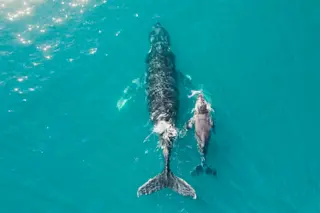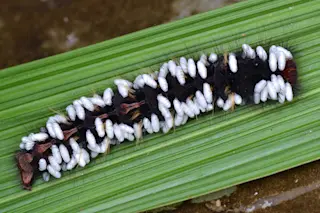Why'd the zebra evolve its stripes? Perhaps because stripes seem to keep off horseflies
, a new study suggests. There's good evolutionary reason to escape the ravages of horseflies, at least for horses and their relatives; though flies are just annoying pests from the human perspective, horsefly-bitten horses can grow skinny and have trouble producing milk for their young. And as soon as baby-making is affected by something in the environment, adaptation isn't far behind. Other research has shown that horseflies prefer to land on black horses instead of white, which got Gabor Horvath, author of the recent study, thinking about how they'd react to black-and-white specimens, such as zebras. Of course, actual zebras can be hard to experiment on, as The Economist notes in an article on the research
:
[Real zebras] insist on moving around and swishing their tails. The team therefore conducted their study using inanimate objects. ...













